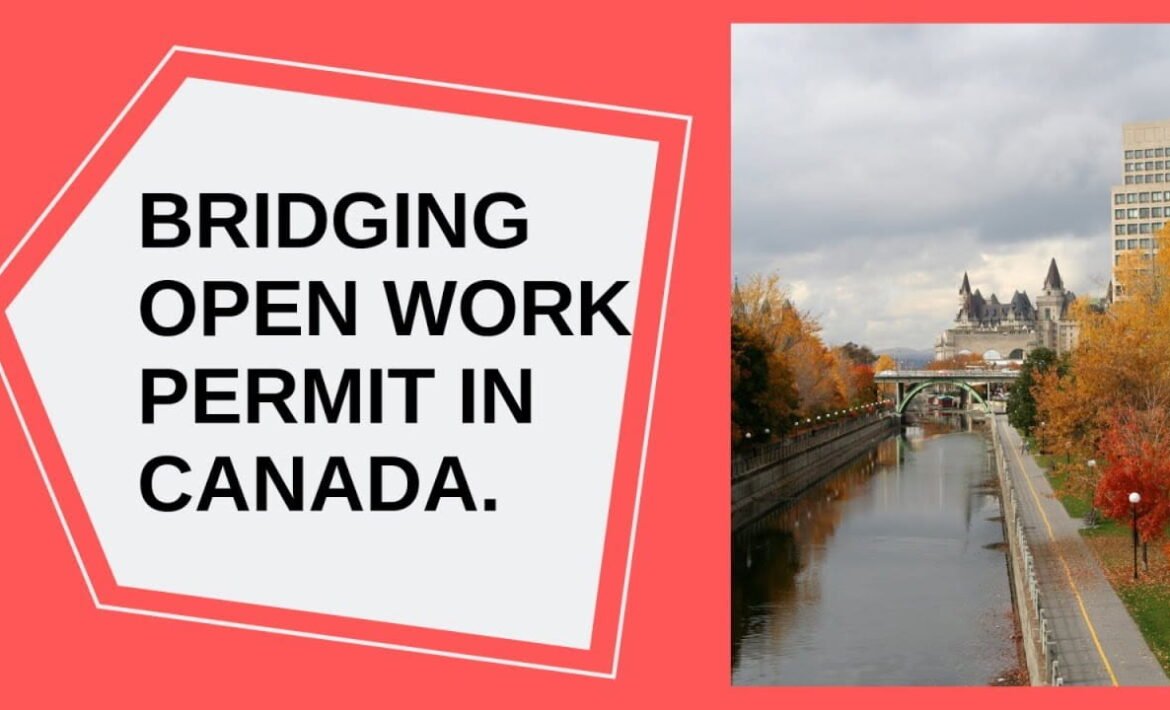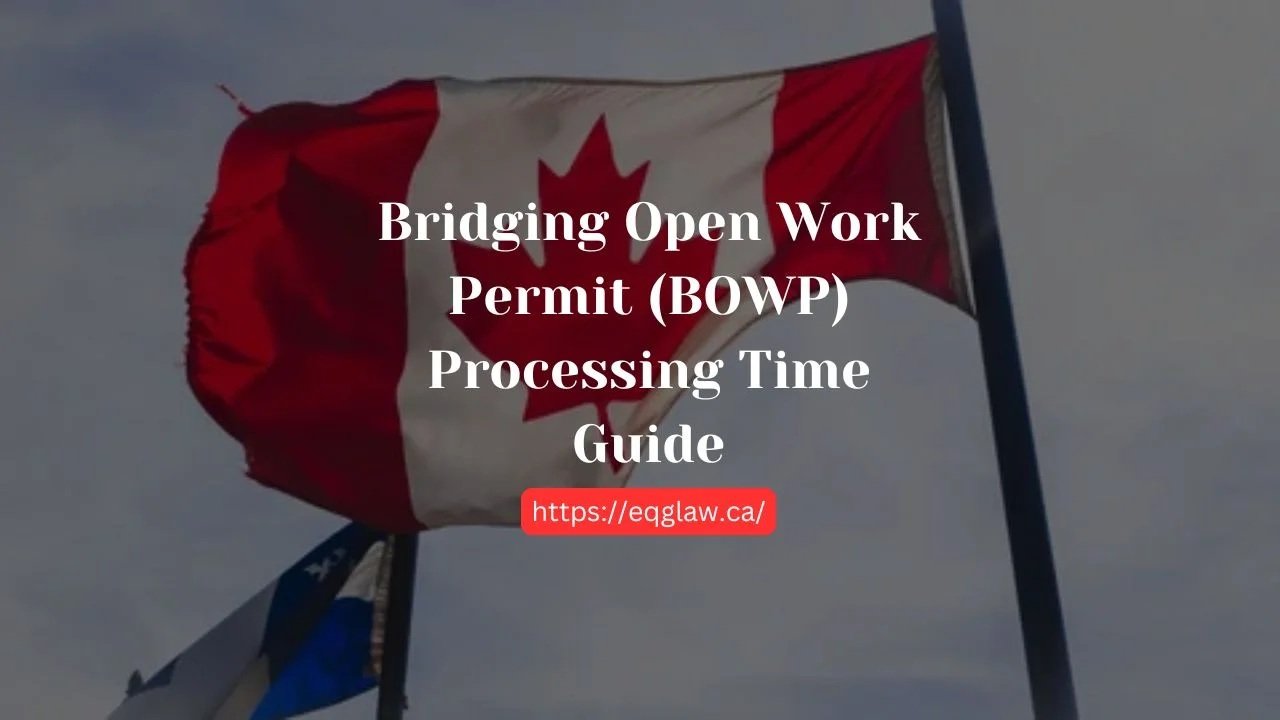The Business Open Work Permit (BOWP) is an important document for individuals who have applied for permanent residence in Canada. It enables candidates to work while their application is being processed, eliminates employment gaps, and ensures financial stability. Processing times vary depending on the transition from a temporary position to a permanent stay.
Applicants often ask about the time it takes to treat work permits, what aspects are lagging during the treatment time, and how it can be streamlined. A better understanding of the average timeline provides individuals with a good indication of their general timeline, enabling them to plan their lives more effectively and avoid disorders in both their professional and personal lives. Since the waiting time is long, it is necessary to receive regular updates from Immigration, Refugees and Citizenship Canada (IRCC) to facilitate a smooth application process.
Factors That Influence BOWP Processing Time
Multiple factors will determine how long a candidate will wait for their BOWP application to be processed. One is the utility type, as online submissions, whether made directly or through consultants, are quicker than those that are mainly paper-based. Secondly, the number of applications that IRCC has at any given time will affect processing times, especially during periods of high immigration levels.
Lastly, the BOWP completion level will also impact processing time, as missing or inaccurate facts can all contribute to delays. Additionally, candidates from identified locations may experience longer processing times due to administrative backlogs. Policy revisions, security checks, and verification forms of implementation can also impact the processing time. Drafting a completed and organised submission will help candidates avoid processing delays and enhance the likelihood of a successful, timely approval.
Average Processing Time for BOWP Applications
The standard processing time for a Bridging Open Work Permit varies depending on the applicant’s location and the type of application submitted. On average, online programs are processed in about 5 months, whereas paper packages may take longer due to additional handling time. IRCC updates processing instances frequently, reflecting the most modern-day estimates primarily based on workload and coverage changes.
While a few candidates acquire their permits sooner, others may face prolonged waits due to extra evaluation requirements. It is recommended to check the professional IRCC website regularly for the latest updates on processing times. Understanding these timelines enables applicants to manage their expectations and avoid unnecessary stress while awaiting the approval of their applications.

How to Track Your BOWP Application Status
Applicants can screen the reputation in their BOWP packages via the official IRCC website. The online tracking machine allows individuals to log in using their precise credentials and view real-time updates on their utility progress. Additionally, IRCC offers email notifications and requests for additional documents if necessary. Those who enjoy delays past the expected processing time can submit inquiries through the IRCC online email to the relevant visa office. Keeping the music of updates and responding immediately to requests from the immigration government can prevent pointless delays.
Common Reasons for Delays in BOWP Processing
Several reasons can cause delays in processing a Bridging Open Work Permit utility. One commonplace issue is incomplete documentation, where lacking or incorrectly filled paperwork requires extra processing time. Background checks and safety screenings may amplify the waiting time, specifically for candidates from international locations with stringent verification requirements. Changes in immigration rules or accelerated application volumes can slow down the technique. Delays can also arise when IRCC requests additional statistics or clarification from the applicant, which may not be readily available. Understanding these capacity obstacles allows applicants to prepare and minimize disruptions to their work and residency plans.
Tips to Expedite the BOWP Processing Time
While processing times are largely dependent on IRCC’s workflow, there are several steps applicants can take to expedite the process. All required files guarantee that the software is processed without needless interruptions. Choosing online submission over paper packages can also result in quicker processing. Regularly checking emails for any communication from IRCC and responding directly to requests can save you delays. Applicants who have waited past the automated processing time can post a case-specific inquiry to request an update on their software. Emailing those proactive measures will increase the likelihood of a clean and timely approval of the paintings.
Impact of BOWP Processing Time on Employment and Residency
The time it takes to process a Bridging Open Work Permit can significantly impact an applicant’s employment and residency plans in Canada. Delays in obtaining a BOWP can also result in economic strain and uncertainty for people waiting for permanent residency. Employers may additionally hesitate to extend contracts or lease candidates whose work is still under review. In cases where a BOWP isn’t accepted before an applicant’s permit expires, individuals may also need to maintain the legality of the applicant. For this reason, being aware of processing timelines and making plans enables the mitigation of potential risks and guarantees a seamless transition for applicants and their employers.
Future Changes and Improvements in BOWP Processing
As Canada continues to refine its immigration system, enhancements in the processing of Bridging Open Work Permits are anticipated. Digital transformation and automation can also reduce wait times for applicants filing online packages—policy modifications, which include prioritization of certain classes of workers, may also affect processing instances in the future. Increased staffing and streamlined approaches at IRCC may contribute to quicker approvals. Similarly, Sta, Ying updated with immigration traits and policy modifications, ensuring that applicants are well-organized for any changes that affect their BOWP processing time. Keeping track of enhancements within the machine allows individuals to make informed selections regarding their work and residency reputation in Canada.
Conclusion
The treatment time for a building with an open work permit is crucial for individuals who plan to make Canada their permanent residence. Understand the factors that affect treatment time, monitor the software frames, address capacity delays, and assist candidates in navigating the process correctly. As Canada continues to refine its immigration processes, along with future enhancements to the application process, the transition for candidates can be further streamlined. The current plan and awareness of state-of-the-art updates make a meaningful and successful journey towards permanent stay.








